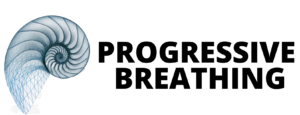Supporting Hormone Functionality through Nasal Breathing
Nasal breathing plays a vital role in supporting hormone functionality and production by enhancing the body’s overall physiological balance. When you breathe through your nose, the air is filtered, warmed, and humidified, which optimizes oxygen delivery to the lungs and subsequently to the entire body. This increased oxygenation supports the efficient functioning of the endocrine system, which is responsible for hormone production.
Nasal breathing also stimulates the production of nitric oxide, a molecule that improves blood flow and oxygen delivery to tissues, including endocrine glands like the thyroid, adrenal glands, and reproductive organs. This improved circulation is essential for the glands to function properly and produce hormones such as cortisol, thyroid hormones, and sex hormones like testosterone and estrogen.
Moreover, nasal breathing activates the parasympathetic nervous system, promoting relaxation and reducing stress. By lowering stress levels, nasal breathing helps balance cortisol production, preventing the hormonal imbalances that chronic stress can cause. Additionally, it enhances sleep quality, which is crucial for the production of hormones like growth hormone and testosterone, which are predominantly released during deep sleep. In this way, nasal breathing supports and optimizes hormone functionality and production, contributing to overall hormonal health and balance.
Hormones and their Purpose
Serotonin
Serotonin is a neurotransmitter primarily found in the brain and gastrointestinal tract. It plays a crucial role in regulating mood, appetite, sleep, and cognition. Serotonin is often referred to as the “feel-good” neurotransmitter because it contributes to feelings of well-being and happiness. Imbalances in serotonin levels have been linked to mood disorders such as depression and anxiety. 94% of Serotonin is found in the gut.
Dimethyltryptamine (DMT)
DMT is a powerful psychedelic compound found naturally in certain plants and animals, as well as in trace amounts in the human brain. It is known for its hallucinogenic effects and is often consumed as a recreational drug for its intense and mystical experiences. DMT is also believed to play a role in dreaming and near-death experiences.
Dopamine
Dopamine is a neurotransmitter involved in various brain functions, including motivation, reward, pleasure, and motor control. It plays a key role in the brain’s reward system, reinforcing behaviors that lead to pleasure and satisfaction. Dopamine is associated with feelings of pleasure and euphoria, and its dysregulation has been linked to addiction, Parkinson’s disease, and schizophrenia.
Vasopressin
Vasopressin, also known as antidiuretic hormone (ADH), is a peptide hormone produced by the hypothalamus and released by the pituitary gland. It plays a critical role in regulating water balance
and blood pressure by promoting water reabsorption in the kidneys. Vasopressin also has effects on social behavior, memory, and aggression.
Oxytocin
Oxytocin is a hormone and neurotransmitter often referred to as the “love hormone” or “bonding hormone.” It is released in response to social bonding activities such as hugging, kissing, and childbirth. Oxytocin promotes social bonding, trust, empathy, and maternal behavior. It also plays a role in sexual arousal and lactation.
Melatonin
Melatonin is a hormone produced by the pineal gland in response to darkness. It plays a key role in regulating the sleep-wake cycle and promoting sleep. Melatonin levels rise in the evening,
signaling the body to prepare for sleep, and decrease in the morning, signaling wakefulness. Melatonin supplements are commonly used to treat sleep disorders such as insomnia and jet lag.
Cortisol
Cortisol is a steroid hormone produced by the adrenal glands in response to stress. It plays a vital role in the body’s stress response, helping to regulate metabolism, immune function, and inflammation. Cortisol levels fluctuate throughout the day, with higher levels in the morning to promote wakefulness and lower levels at night to facilitate sleep. Chronic stress can lead to dysregulation
of cortisol levels, contributing to various health problems such as anxiety, depression, and metabolic disorders.
Thyroxine
Thyroxine, also known as T4, is a thyroid hormone produced by the thyroid gland. It plays a crucial role in regulating metabolism, growth, and development. Thyroxine helps control the body’s energy expenditure, temperature regulation, and heart rate. Imbalances in thyroxine levels can lead to conditions such as hypothyroidism or hyperthyroidism, affecting energy levels, weight, and mood.
Testosterone
Testosterone is a steroid hormone primarily produced in the testes in males and in smaller amounts in the ovaries in females. It is responsible for the development of male reproductive tissues and
secondary sexual characteristics, such as muscle mass, bone density, and facial hair growth. Testosterone also plays a role in libido, mood regulation, and cognitive function.
Progesterone
Progesterone is a steroid hormone primarily produced in the ovaries in females and in smaller amounts in the adrenal glands in both sexes. It plays a crucial role in the menstrual cycle, pregnancy, and embryogenesis. Progesterone helps prepare the uterus for implantation and maintains the uterine lining during pregnancy. It also has effects on mood, sleep, and metabolism.
Prolactin
Prolactin is a peptide hormone produced by the pituitary gland. It plays a key role in lactation, promoting milk production in mammary glands after childbirth. Prolactin levels rise during pregnancy and breastfeeding, inhibiting ovulation and menstruation. Prolactin also influences behavior, immune function, and metabolism.
Adrenaline
Adrenaline, also known as epinephrine, is a hormone and neurotransmitter produced by the adrenal glands in response to stress or excitement. It plays a crucial role in the body’s fight-or-flight
response, increasing heart rate, blood pressure, and blood glucose levels to prepare the body for action. Adrenaline also dilates airways, enhances muscle strength, and improves cognitive function.
Esstrogen
Estrogen refers to a group of steroid hormones primarily produced in the ovaries in females and in smaller amounts in the testes in males. Estrogen plays a central role in the development of
female reproductive tissues, secondary sexual characteristics, and the menstrual cycle. It also has effects on bone density, mood, cognition, and cardiovascular health.
ACTH (Adrenocorticotropic Hormone)
ACTH is a peptide hormone produced by the pituitary gland. It stimulates the adrenal glands to produce cortisol and other steroid hormones in response to stress. ACTH helps regulate metabolism, immune function, and stress responses.
FSH (Follicle-Stimulating Hormone)
FSH is a gonadotropin hormone produced by the pituitary gland. In females, FSH stimulates the growth and development of ovarian follicles and promotes estrogen production. In males, FSH stimulates sperm production in the testes.
Growth Hormone
Growth hormone, also known as somatotropin, is a peptide hormone produced by the pituitary gland. It plays a key role in growth, development, and metabolism, stimulating cell growth,
regeneration, and repair. Growth hormone also regulates body composition, muscle mass, bone density, and metabolism.
Insulin
Insulin is a peptide hormone produced by the pancreas that regulates glucose metabolism. It helps lower blood glucose levels by promoting the uptake of glucose into cells for energy production or
storage. Insulin also plays a role in lipid metabolism and protein synthesis.
Aldosterone
Aldosterone is a steroid hormone produced by the adrenal glands. It plays a crucial role in regulating electrolyte balance and blood pressure by promoting sodium reabsorption and potassium
excretion in the kidneys. Aldosterone also affects water balance and blood volume, helping to maintain blood pressure and cardiovascular function.
100 Benefits of Nasal Breathing Practice!
Align Movement with Nasal Breathing for optimal health outcomes.



